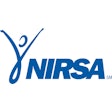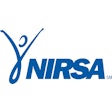![[Photo courtesy of Stephen F. Austin State University Facebook page, June 29, 2016]](https://img.athleticbusiness.com/files/base/abmedia/all/image/2018/05/ab.Nirsa518_feat.png?auto=format%2Ccompress&q=70&w=400)
In the days after Hurricane Harvey slammed into Texas last August, causing unprecedented flooding and evacuations, the Stephen F. Austin State University campus in Nacogdoches — about two hours north of hard-hit Houston — came alive with efforts to help displaced residents.
Rec Centeris a regular feature that highlights topics and issues unique to college recreation. It is produced in cooperation with Athletic Business' valued partner, NIRSA: Leaders in Collegiate Recreation. |
"All these entities on campus wanted to respond, but nobody knew exactly what to do," says Ken Morton, the university's director of campus recreation and the new president of NIRSA's Board of Directors. "We said, 'Hey, let's figure out how to drive them all to one place, and let's be that place.' We're lucky enough to have a great facility with the space to store dropped-off items. We had tons of students, faculty and staff donating goods to us, which we delivered to a third party that took daily runs to the areas that needed them. We didn't spend a lot of time throwing ideas to a committee. We just said, 'Here's a need, now let's be a resource.'"
SFA was far from the only campus to provide relief efforts to communities impacted by natural disaster in 2017, but the university's rapid response serves as an example of the shapeshifting role of college recreation in the 21st century: Identify needs, and then fill them — even if those needs are only peripherally connected with actual recreation.
Morton sees four key functions that campus recreation professionals must fulfill in 2018:
1.) Create and strengthen a sense of belonging and community on campus;
2.) Build lifelong habits for health and wellbeing;
3.) Serve as a platform for civil discourse, social justice and inclusion;
4.) Develop transferable skills for a lifetime of success.
"I think the growth and specialization in the field, along with the emergence of recognition of our industry's contribution to higher education and academic success, has been notable and significant," says George Brown, who doubles as both director of recreation and wellness and assistant vice provost at the University of Minnesota-Twin Cities. "Today's campus recreation professional is expected to contribute to and often lead communitywide programs and services designed to recruit and retain students, faculty and staff, and play key roles in student success toward global citizenship."
In other words: "We just keep meeting the needs of students as society changes," Morton says.
Hard to pigeonhole
The potential to positively impact student development is what initially attracted Morton — whose background also includes jobs in public rec and church rec — to college recreation.
For more information about NIRSA: Leaders in Collegiate Recreation visit www.nirsa.org
He points out that the evolution of NIRSA coincides with changes in the industry. Originally known as the National Intramural Association beginning in 1950 and then expanding to the National Intramural-Recreational Sports Association a quarter-century later, the organization now is simply known as NIRSA: Leaders in College Recreation.
"We communicate with so many different entities on campus that it's hard to pigeonhole us anymore," Morton says.
Take, for example, the increasing role recreation departments play in the health of their students. Some colleges and universities group recreation programming, counseling services, health promotion and health clinics under the same umbrella — collaborating and taking an integrated approach to wellbeing. If a student suffers from depression, Morton says, part of an on-campus counselor's prescription might be taking a group exercise class or working with a personal trainer, because movement helps people better deal with stress, depression and anxiety.
"It all boils down to us trying to break down the silos," he says. "Lots of different factors play into that. How can we, as a campus community, remove some of the barriers to make the overall experience for students more seamless? When we create a sense of community where people feel welcome — 'This is my tribe, and I am at home here' — they now have a place they can go and people they can talk to. That's big."
As NIRSA staffers like to say, "Magic happens inside facilities," and that magic goes well beyond students' physical wellbeing.
On most campuses, recreation programs serve more students than any other program, which gives rec professionals plenty of opportunities to put NIRSA's strategic values — which include equity, diversity and inclusion; global perspective; and leadership — into action.
"Something happens in our facilities where students just get along well," Morton says. "It's like they're a little bit inoculated against some of the anti-civil discourse issues that might be happening on other parts of campus. So, the question is how do we use the mechanism of sports, recreation, play and wellness to transcend some of those issues?"
That's a question many recreation professionals are trying to answer.
"Taking what campus recreation provides inherently and seeking ways to create a lasting, supportive relationship beyond the walls of recreation facilities has a profound potential impact of greater, lasting wellbeing — aided by a more genuine sense of support and respect," Brown says.
Over the past 18 months, Minnesota-Twin Cities has developed a social wellness initiative designed to enhance relationships among students when they are elsewhere on campus and in the community. "All aspects of our departmental operations are undergoing a comprehensive review and adaptation of programs, policies, procedures, communications, facility access patterns and staffing to address this initiative," Brown says.
The action inside today's campus recreation facilities never slows down, and neither should the efforts to improve and expand rec's reach.
"While it may not seem like a major shift, it is about viewing what we offer as a means to a greater impact versus what we offer as the goal," says Sean Basso, associate director of programming, education and evaluations in the University of Tennessee's RecSports Department. "I would say the single greatest change I've seen in collegiate recreation in the first decade of my career is the paradigm shift from the classical model of providing a fun, safe and active environment to the wellbeing model, which continues to evolve today."
"Recreation can be pretty responsive and nimble," Morton concludes. "And we try to meet the needs of our students and campuses by adapting and changing."
This article originally appeared in the May 2018 issue of Athletic Business with the title "The ever-evolving role of campus recreation." Athletic Business is a free magazine for professionals in the athletic, fitness and recreation industry. Click here to subscribe.





































